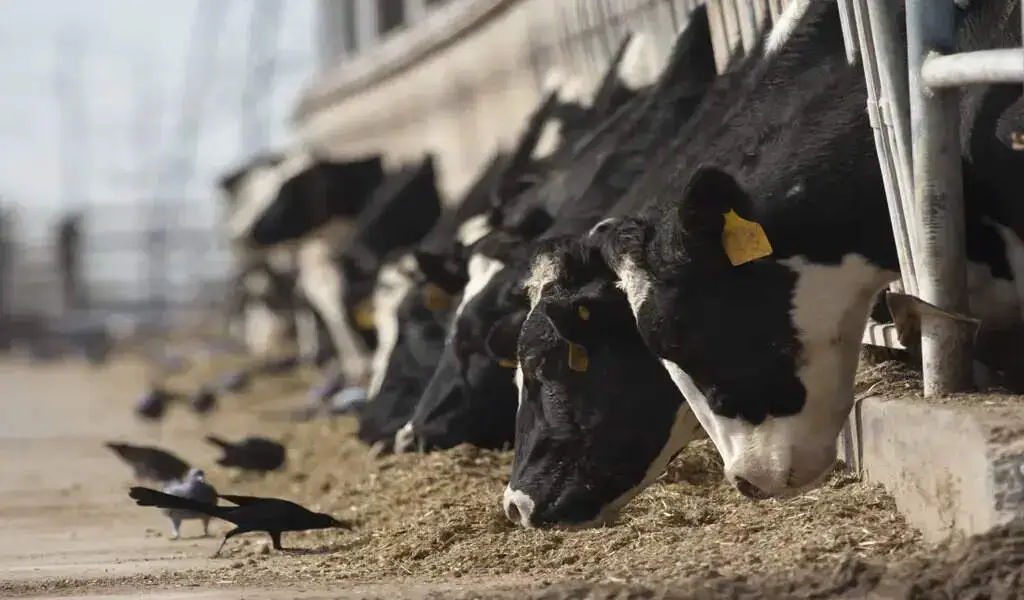Health
A New Bird Flu Outbreak in Animals Has Trump’s Government Worried.

(VOR News) – A novel H5N1 Bird Flu strain was detected in dairy calves. It spread quickly among wild birds and made people sick. The USDA said in a report Wednesday that Nevada dairy cows had the new virus.
The result worries scientists, as it may indicate a new pandemic phase, although its effects are unclear. The lack of government health institutions makes the situation’s severity unclear.
Angela Rasmussen, a virologist at the University of Saskatchewan in Canada, says, “We have not obtained any information concerning the CDC’s current response, or if they are responding at all.” Academics and NGOs struggle to help with this issue.
The D1.1 genotype mutation differs from last year’s dairy bird flu cow illnesses.
A single spillover occurrence in the Texas Panhandle in late 2023 is thought to have caused the present statewide Bird Flu outbreak, harming bird and mammal populations. But this new finding shows the virus has re-infected dairy heifers.
Michael Worobey, an evolutionary scientist at the University of Arizona, says, “This shows that eliminating one virus can lead to another, like whack-a-mole.” The virus’s duration and spread in cattle is unclear. Worobey says this raises worries about the spread of animal sickness and its impact on humans.
The D1.1 genotype may require changes to the vaccines in development, as the dairy population’s Bird Flu immunity may not last. Worobey said the virus may be “more challenging, more complex, and less likely” to be eradicated from dairy animals.
Dr. Jürgen Richt, a veterinary microbiologist at Kansas State University, told NPR via email that D1.1 infections in cattle are unlikely to change in virulence or transmission. But human history may show a big change.
Bird flu has no effect on dairy workers. The D1.1 genotype caused two deaths in North America: a kid in British Columbia fell ill, and a Louisiana resident died after contracting the virus from private flocks. Her infection’s cause is unknown.
Bird flu researchers think this form may be worse.
Yet the form of exposure and related factors may also be crucial. Some viruses may spread more easily. Louise Moncla, a virologist at the University of Pennsylvania, thinks giving them to dairy heifers could raise human exposure.
Worobey observed that in every instance, the virus underwent hazardous changes during the disease, suggesting its adaptability to more efficiently infect human cells. “More people may get upper respiratory infections or need hospitalization.”
Worobey says, “a significant duration will elapse before experiments are undertaken to achieve a more thorough comprehension of the implications for humans,” since most of last year’s research focused on other animals.
Federal response issues
The Nevada strain is one of the few recent government-identified Bird Flu outbreaks under Trump’s presidency.
The CDC told NPR on Wednesday that some external communications had resumed. The federal government has approved various messages about health and safety regulations and will continue to do so. The data for testing and surveillance sites has been updated.
Lori Freeman, chair of the National Association of County and City Health Officials, said her members are getting less bird flu data. She told NPR last week, “We have a deficiency in that area and expect it to be fixed soon.”
Dr. Manisha Juthani, commissioner of the Connecticut Department of Public Health, said federal and state health officials met last Monday. She said the break is brief and they will resume normal contact.
There may be insufficient test results or a late release. Birds can infect cattle.
80 commercial colonies have new poultry infestations last month. Many countries are urging vigilance due to rising detection rates in wild and domestic birds. Juthani says there’s no proof of human-to-human transmission, but “the pace of what we are observing has intensified.”
Dr. Meghan Davis said chicken outbreaks could be caused by bird migration and farm biosecurity. Davis, a veterinarian and epidemiologist at the Johns Hopkins Bloomberg School of Public Health, says, “These outbreaks are often due to migratory waterfowl.”
Davis thinks the dairy cattle outbreak’s scale is immeasurable since farm testing is lacking and offspring signs are hard to diagnose. She said, “Producers can’t tell if a cow is positive, which could help on-farm management.”
The federal government’s failure to gather and submit thorough and timely data on last year’s samples has proven irritating.
Worobey thinks that the lack of this data greatly impacts him and his coworkers, who are monitoring the outbreak and studying dangerous strains. Dairy cattle benefit from the D1.1 mutation. “We’re limiting ourselves,” he says. “We can grasp phenomena quickly, but this ability is underused.”
SOURCE: NPR
SEE ALSO:
Heart Failure Risk is Doubled in Patients With Severe Infections.
Quick Blood Tests Can Help Treat Strokes More Effectively